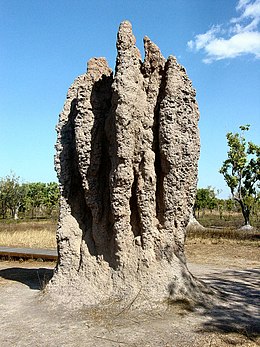Emergence
In philosophy, systems theory, science, and art, emergence is the way complex systems and patterns arise out of a multiplicity of relatively simple interactions. Emergence is central to the theories of integrative levels and of complex systems.

Definitions
The concept has been in use since at least the time of Aristotle. John Stuart Mill and Julian Huxley are just some of the historical luminaries who have written on the concept.

Every resultant is either a sum or a difference of the co-operant forces; their sum, when their directions are the same — their difference, when their directions are contrary. Further, every resultant is clearly traceable in its components, because these are homogeneous and commensurable. It is otherwise with emergents, when, instead of adding measurable motion to measurable motion, or things of one kind to other individuals of their kind, there is a co-operation of things of unlike kinds. The emergent is unlike its components insofar as these are incommensurable, and it cannot be reduced to their sum or their difference. (Lewes 1875, p. 412) (Blitz 1992)
Jeffrey Goldstein in the School of Business at Adelphi University provides a current definition of emergence in the journal, Emergence (Goldstein 1999). Goldstein initially defined emergence as: “the arising of novel and coherent structures, patterns and properties during the process of self-organization in complex systems”.
Goldstein’s definition can be further elaborated to describe the qualities of this definition in more detail:
The common characteristics are:
(1) radical novelty (features not previously observed in systems);
(2) coherence or correlation (meaning integrated wholes that maintain themselves over some period of time);
(3) A global or macro “level” (i.e. there is some property of “wholeness”);
(4) it is the product of a dynamical process (it evolves); and
(5) it is “ostensive” (it can be perceived). For good measure, Goldstein throws in supervenience — downward causation. (Corning 2002)
Corning’s definition of emergence:
Rules, or laws, have no causal efficacy; they do not in fact “generate” anything. They serve merely to describe regularities and consistent relationships in nature. These patterns may be very illuminating and important, but the underlying causal agencies must be separately specified (though often they are not). But that aside, the game of chess illustrates precisely why any laws or rules of emergence and evolution are insufficient. Even in a chess game, you cannot use the rules to predict “history” — i.e., the course of any given game. Indeed, you cannot even reliably predict the next move in a chess game. Why? Because the “system” involves more than the rules of the game. It also includes the players and their unfolding, moment-by-moment decisions among a very large number of available options at each choice point. The game of chess is inescapably historical, even though it is also constrained and shaped by a set of rules, not to mention the laws of physics. Moreover, and this is a key point, the game of chess is also shaped by teleonomic, cybernetic, feedback-driven influences. It is not simply a self-ordered process; it involves an organized, “purposeful” activity. (Corning 2002)